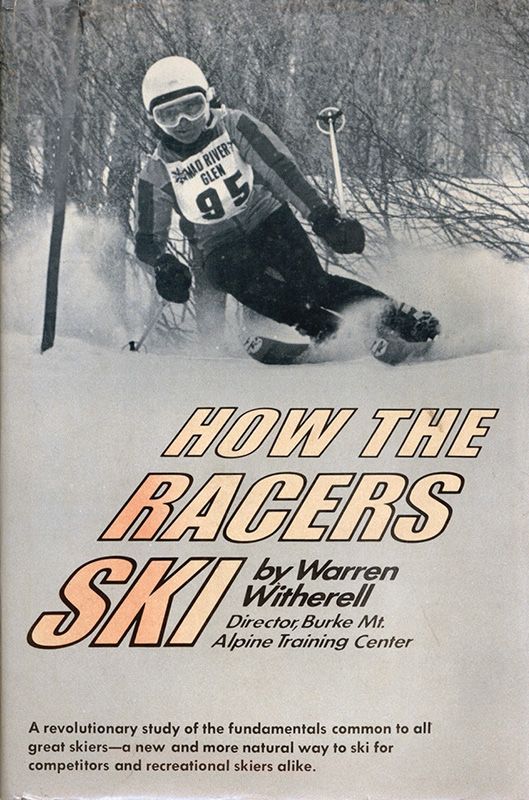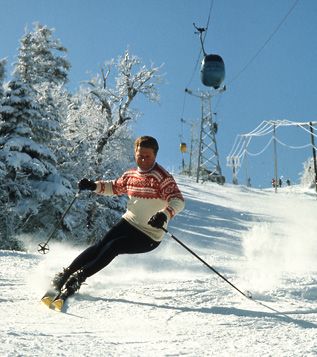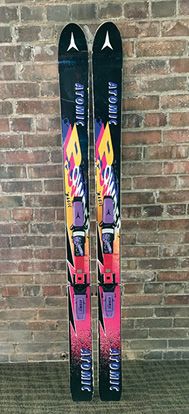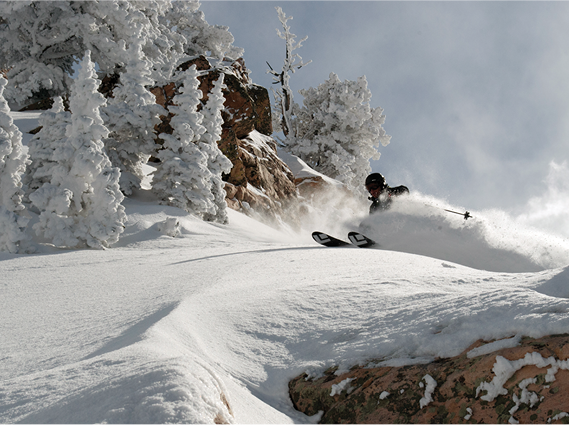
SKIING HISTORY
Editor Kathleen James
Art Director Edna Baker
Contributing Editor Greg Ditrinco
ISHA Website Editor Seth Masia
Editorial Board
Seth Masia, John Allen, Andy Bigford, John Caldwell, Jeremy Davis, Kirby Gilbert, Paul Hooge, Jeff Leich, Bob Soden, Ingrid Wicken
Founding Editors
Morten Lund, Glenn Parkinson
To preserve skiing history and to increase awareness of the sport’s heritage
ISHA Founder
Mason Beekley, 1927–2001
ISHA Board of Directors
Seth Masia, President
Wini Jones, Vice President
Jeff Blumenfeld, Vice President
John McMurtry, Vice President
Chan Morgan, Treasurer
Einar Sunde, Secretary
Richard Allen, Skip Beitzel, Michael Calderone, Christin Cooper, Art Currier, Dick Cutler, Chris Diamond, Mike Hundert, David Ingemie, Rick Moulton, Wilbur Rice, Charles Sanders, Bob Soden (Canada)
Presidential Circle
Christin Cooper, Billy Kidd, Jean-Claude Killy, Bode Miller, Doug Pfeiffer, Penny Pitou, Nancy Greene Raine
Business & Events Manager
Kathe Dillmann
P.O. Box 1064
Manchester Center VT 05255
(802) 362-1667
kathe@skiinghistory.org
Membership Services
Laurie Glover
(802) 375-1105
laurie@skiinghistory.org
Corporate Sponsorships
Peter Kirkpatrick
(541) 944-3095
peterk10950@gmail.com
Bimonthly journal and official publication of the International Skiing History Association (ISHA)
Partners: U.S. Ski and Snowboard Hall of Fame | Canadian Ski Museum and Hall of Fame
Alf Engen Ski Museum | North American Snowsports Journalists Association | Swiss Academic Ski Club
Skiing History (USPS No. 16-201, ISSN: 23293659) is published bimonthly by the International Skiing History Association, P.O. Box 1064, Manchester Center, VT 05255.
Periodicals postage paid at Manchester Center, VT and at additional mailing offices. Postmaster: Send address changes to ISHA, P.O. Box 1064, Manchester Center, VT 05255
ISHA is a 501(c)(3) public charity. EIN: 06-1347398
Written permission from the editor is required to reproduce, in any manner, the contents of Skiing History, either in full or in part.
Commentary: Paradise Lost
Finally perfected after 30 years, the carving ski failed to gain a following in North America. In its place, we got a ski that has made resort slopes less safe.
(Photo above: Modern “shaped” skis were originally developed to help racers achieve the pure, carved turn—eliminating the braking effect of skidding. Ron LeMaster photo)

on traditional straight skis. This unidentified alpine
racer is approximating a carve, probably at a
World Cup race circa 1968.
For most of modern skiing’s history, the execution of a perfect turn has been an unobtainable ideal. Leather boots and wooden skis weren’t able to initiate and sustain a continuous, seamless carve. In the January 1967 issue of SKI magazine, Olympic gold medalist and Jackson Hole ski-school director Pepi Stiegler described a teaching method of getting the skis on edge so “the skis are literally carving the turn for you.” He called it the “Moment of Truth on Skis.”
“To start the turn, the skier should have the feeling of his weight going forward on the uphill ski and twisting the skis downhill. The resulting sensation is of a drift in the direction of the turn. At some split second during this process, the skier senses a moment to apply the edges and start the skis carving.”
At the time, the invention of plastic boots and the use of metal and fiberglass in ski design had brought the grail of the carved turn within reach. Stiegler, who became the NASTAR national pacesetter, clearly saw the desirability of recreational skiers knowing how to carve a turn.
The year before he died, the incomparable Stein Eriksen sent ski historian John Fry a package that included several photos of Stein in his iconic reverse-shoulder stance, along with a letter in which Eriksen asked Fry whether he should be considered the inventor of the carvedturn. Ever the diplomat, Fry replied that he doubted an uninterrupted carve was possible on 1950s-era equipment, “but if anyone could do it, it would be you.”

the idea of the carved turn as a goal
for young racers.
Perhaps the best-known apostle of the carved turn was Burke Mountain Academy founder Warren Witherell, who explained in How the Racers Ski (1972) what constituted a perfect carve: “In the very best racing turns, the entire edge of the ski passes over the same spot in the snow. The tip initiates the turn, biting into the snow and setting a track or groove through which the remainder of the ski edge flows.”
While Witherell’s gospel found faithful adherents in the race community, it failed to ignite interest among recreational skiers—in part because carving on a long,

pure carved turn on his Head
Masters (here at Sugarbush).
Fred Lindholm photo.
narrow ski was still a difficult skill to develop. While Witherell was preaching to the coaching choir, the public’s attention turned to the counter-culture phenomenon known as hotdog skiing, a.k.a. freestyle. Short skis would soon be all the rage, both as a means of abbreviating the learning curve and as a superior tool for moguls, aerials and ballet.
The concept of carving recaptured a toehold in the public’s consciousness with the advent of snowboarding and images of a steeply angled board sending up geysers of powder. The popularity of snowboarding and its short learning curve challenged ski designers to reconsider their assumptions about ski dimensions.
By 1995 there were just enough wasp-waisted models to muster a carving-ski category worthy of examination by Snow Country, where I oversaw the magazine’s testing. Over the next two seasons, deep-sidecut carving skis would render the relatively shapeless skis that preceded them obsolete. The universal acceptance of shaped skis appeared to augur a new world in which everyone would henceforth carve turns because every ski was a carving ski. The nirvana envisioned by Stiegler in the 1960s had been attained. (For the history of shaped skis, visit https://skiinghistory.org/history/evolution-ski-shape.) But...it didn’t happen.

Magic, 1998
The disruptive force that altered the path of ski design began innocently enough. When Atomic introduced the Powder Magic in 1988, its target audience was the heli-skiing patron who no longer would tire quickly in the bottomless snow, thanks to the new fat skis.
All the ski designer had to do to make the fat ski easier to steer was lift the tip and tail out of the snow, leaving a short foundation underfoot that could be swiveled side to side much more easily than it could be tilted on edge. The ski forebody, instead of seeking connection with the snow, now performed the same function as a Walmart greeter: It’s friendly but otherwise plays no part in what goes on behind it.

1991
If Warren Witherell was the evangel of carving, the Pied Piper of the emerging fat ski was Shane McConkey. McConkey wanted a better tool for attacking bottomless snow in extreme terrain. He persuaded his sponsor, Volant, to create the Spatula. The Spatula was the embodiment of the anti-carver, with a reverse sidecut and reverse camber. It inspired an explosion in the wide, rockered, all-terrain ski designs that currently dominate the U.S. market.
In the European Alpine countries where skiing has always had a broader base of participation, the notion that carving was a teachable skill found fertile soil. To this day, carving perfect turns on prepared slopes is central to the European ski experience.
Carving never caught on in America. A carved turn is best practiced on groomed terrain. Americans were more attracted to the versatility afforded by an all-mountain ski. By definition, “all-terrain” includes powder, and proficiency in deep snow depends on width. The appeal of skiing the entire mountain, and being properly equipped for the rare powder day, outweighed the allure of making a perfect turn every day.

surface of deep powder, permitting a pivot-and-slip
technique. It’s the opposite of carving.
Americans were enticed away from carving skis by fat skis that enabled skiers to easily swivel their way downhill. Lower-skill skiers can access ungroomed terrain they didn’t have the confidence to try before. But on regular groomed terrain at high speed, fat skis with limited edge contact don’t make for better or safer skiers. Quite the opposite. I’ll bet there aren’t ten people reading this who either haven’t been involved in a skiing collision, had a close call or knows someone who has been hit. The bottom line: Skis with waists from 75-90 millimeters would better serve the vast majority of skiers rather than models that are 100 millimeters and above. The wide platform of fatter skis does provide stability, but the trade-off in loss of quickness and edge control is not worth the price.
In a recent member survey, seniorsskiing.com found out-of-control, fast and reckless skiers and snowboarders to be the number-one grievance about the resort experience. “A few jerks skiing dangerously” and “risk-takers who don’t turn on groomers” far surpassed complaints about lift ticket prices, cafeteria food quality, and long walks to and from parking lots.
Carving skis offered a means of enabling skiers to control their speed and trajectory. The proliferation of highly specialized powder skis being used as everyday skis has had exactly the opposite effect. Not only are these skiers personally at risk, but everyone who shares our crowded slopes with them is also potentially in harm’s way. 
Jackson Hogen is the editor of Realskiers.com, which tests and evaluates ski equipment. He is past General Secretary of the ASTM Committee on Ski Safety, and past Chairman of SIA’s Skiing Safety Committee.
.png)



Table of Contents
2020 Corporate Sponsors

World Championship
($3,000 and up)
Alyeska Resort
Gorsuch
Intuition Sports, Inc.
Obermeyer
Polartec
Warren and Laurie Miller
Snowsports Merchandising Corporation
World Cup ($1,000)
Active Interest Media | SKI & Skiing
Aspen Skiing Company
BEWI Productions
Bogner
Boyne Resorts
Country Ski & Sport
Dale of Norway
Darn Tough Vermont
Descente North America
Dynastar | Lange | Look
Fairbank Group: Bromley, Cranmore, Jiminy Peak
Fera International
Gordini USA Inc. | Kombi LTD
HEAD Wintersports
Hickory & Tweed Ski Shop
Mammoth Mountain
Marker-Völkl USA
National Ski Areas Association (NSAA)
Outdoor Retailer
POWDR Adventure Lifestyle Corp.
Rossignol
Ski Area Management
Sun Valley Resort
Vintage Ski World
World Cup Supply, Inc.
Gold ($700)
Race Place | BEAST Tuning Tools
The Ski Company (Rochester, NY)
Thule
Silver ($500)
Alta Ski Area
Clic Goggles
Dalbello Sports
Deer Valley
Ecosign Mountain Resort Planners
Hertel Ski Wax
Holiday Valley
Hotronic USA, Inc. | Wintersteiger
MasterFit Enterprises
Metropolitan New York Ski Council
Mt. Bachelor
NILS, Inc.
Portland Woolen Mills
Russell Mace Vacation Homes
Schoeller Textile USA
Scott Sports
Seirus Innovations
SeniorsSkiing.com
Ski Utah
Snow Time, Inc.
Sports Specialists, LTD
SympaTex
Tecnica Group USA
Timberline Lodge & Ski Area
Trapp Family Lodge
Vuarnet
Western Winter Sports Reps Association
World Pro Ski Tour
For information, contact: Peter Kirkpatrick | 541.944.3095 | peterk10950@gmail.com
ISHA deeply appreciates your generous support!


